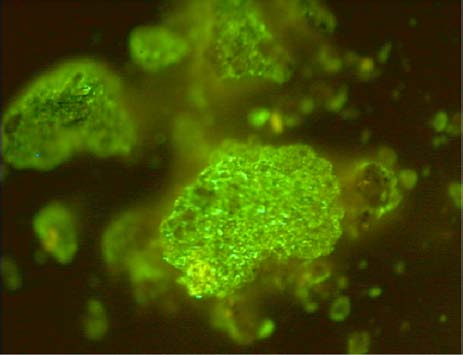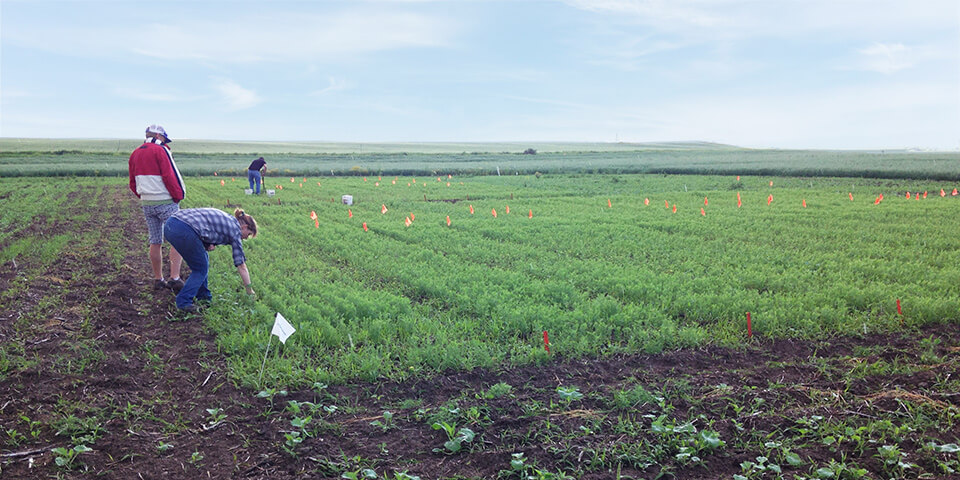
Did you know? Agriculture currently accounts for 70% of global water withdrawals, mostly for irrigation ¹
Learn how mycorrhizae help plants uptake more water from the soil

Did you know? Agriculture currently accounts for 70% of global water withdrawals, mostly for irrigation ¹
Learn how mycorrhizae help plants uptake more water from the soil
Mycorrhizae play a major role in actively increasing water uptake by developing a network of filaments that explores the soil and accesses more nutrients and water to transfer to the plant.
MYCORRHIZAE are beneficial symbiosis between a mycorrhizal fungus and roots. The spore germinates in the soil and produces tiny filaments (hyphae) which, in contact with a root, penetrate the cells and form structures of exchange with the plant. A network of extra-root filaments will develop, exploring the soil to provide nutrients and water to the plant. This beneficial alliance accelerates root development and stimulates plant growth.
The mycorrhizae give a bigger soil contact surface area for the plant to reach more nutrients and water. In other words, the mycorrhizae reach a larger volume of soil that the plant roots do not reach alone.
“The absorptive area of mycorrhizal hyphae is approximately 10 times more efficient than that of root hairs and about 100 times more efficient than that of roots.” 2 With the longest reaching hyphae of 10 cm from the roots compared to other mycorrhizal fungi3, the mycorrhizal species used in AGTIV® products (Glomus intraradices) will take up and deliver more water to the plants.
This video shows how fast water, nutrients and sugar are moving in the mycorrhizal hyphae.
It has been found that plants with Arbuscular mycorrhizal fungi (AMF) association display greater hydraulic conductivity in roots and reduced transpiration rate under drought stress.
AMF have a positive impact on plant-water relationships, which is extremely beneficial in drought situations. This extends to:
Mycorrhizae play a major role in the soil particle aggregation process and contribute to improving soil structure which leads to better water infiltration, better aeration, less erosion and leaching.
In fact, mycorrhizae have been shown to improve soil structure by releasing a "biological glue" called glomalin and to increase the presence of other beneficial microorganisms in the root environment.
Glomalin in soil aggregate

Glomalin surrounding soil particles. (Photo from Dr. Sara Wright, USDA-ARS)
_______
Sources:
1 UNESCO (2018) United Nations World Water Development Report 2018: Nature-based solutions for water unless
2 Jones, C. E. 2009. Mycorrhizal fungi -powerhouse of the soil. Evergreen Farming 8:4-5.
3 Tonar, C., Schnepf, A., Frossard, E., Roose, T., Jansa, J. (2010). Traits related to differences in function among three arbuscular mycorrhizal fungi. Plant Soil, (2011) 339:231-245.
4 Ruiz-Lozano J.M., Azcon R., Gomez M. (1994) Effects of Arbuscular-Mycorrhizal Glomus Species on Drought Tolerance: Physiological and Nutritional Plant Responses. Applied and Environmental Microbiology (February 1995). READ ARTICLE

With the arrival of spring, farmers everywhere are gearing up for another season of growth and abundance. And here at AGTIV®, we're thrilled to be your partner in planting success!

Find out how Premier Tech has been able to implement the investments, the infrastructure and partnerships needed to develop mycorrhizal fungi and other natural active ingredients.